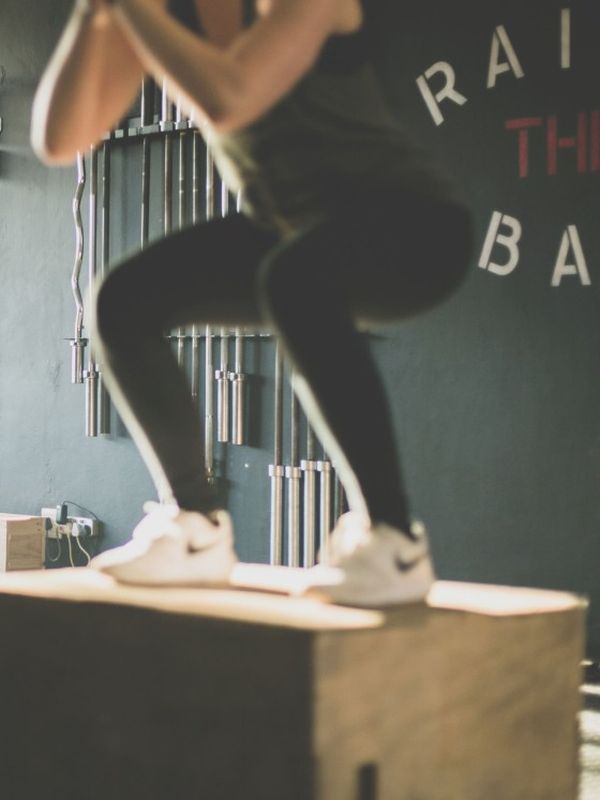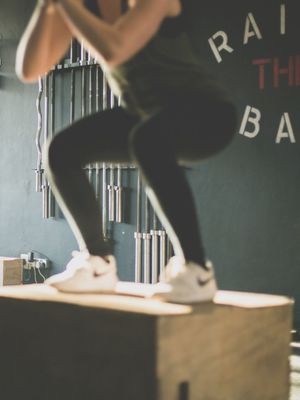
12 Things You’ve Always Wanted To Know About Your Pelvic Floor
Firstly, what exactly is the pelvic floor?
“The pelvic floor is made up of several muscles which support the organs of the body and sit above them – for women this is the womb, bladder and bowel. These muscles should be strong and able to support these organs, but also be able to relax too. As well as supporting the health of the bladder, the pelvic floor also plays a key role in supporting your core and back muscles.” – Dr Lucy Hooper
At what age do pelvic floor muscles actually start to weaken?
“It’s really down to the individual and depends on your weight, whether you’ve had babies and how they were born (eg. C-section, normal delivery, forceps, large tears), and what kind of exercise you do. There’s also a degree of genetics to take into account. Plus, after the menopause, all tissues will become slightly laxer due to lack of oestrogen, so many women start to notice a weaker pelvic floor around that time.” – Dr Anita Mitra
What else weakens the pelvic floor?
“When it comes to other factors that weaken the pelvic floor, I always use the analogy of a trampoline. If you jump up and down on it too much, eventually the springs are going to loosen and it will start to sag. This means being overweight, having chronic constipation (needed to strain too much to empty your bowel puts increased strain on the muscles), running and lifting heavy weights (this doesn’t just mean in the gym, and can include toddlers and children as well as work-related lifting) can all take their toll on your pelvic floor. Smoking is also associated with higher rates of pelvic floor dysfunction because it can damage the collagen needed to maintain tissue strength and can cause a chronic cough which again puts the pelvic floor under strain.” – Dr Anita Mitra
How exactly does pregnancy affect the pelvic floor?
“I’ve noticed a common misconception that people think having a Caesarean will protect your pelvic floor. This is unfortunately not true. During pregnancy you constantly have to carry the weight of the pregnancy on your pelvic floor, so it’s still under strain whether it comes out of the sunroof or not.” – Dr Anita Mitra
Is it true sitting all day isn’t good for the pelvic floor?
“Anyone who sits at a desk all day knows it isn’t great for our back and neck muscles. Depending on your posture it can affect the pelvic floor – lots of women ‘tuck’ their bottom in when they sit. Think of all the surrounding muscles, such as glutes and back muscles, as being connected in a chain; if one is in a strange position the others can’t work properly. To protect your pelvic floor when sat at a desk, always sit up straight and try not to slump.” – Dr Lucy Hooper
At what age should you start giving your pelvic floor some TLC?
“There’s no lower age limit. The younger the better and prevention is better than cure. You should try your best to keep your pelvic floor strong from an early age, rather than trying to fix it if and when it goes wrong.” – Dr Anita Mitra
Can a stronger pelvic floor help with your sex life?
“Absolutely. A rhythmic contraction of certain muscles that make up the pelvic floor occurs at the time of orgasm. If the muscles are stronger then so is your orgasm. It’s also been shown particularly in post-menopausal women that performing regular pelvic floor exercises can improve sexual satisfaction.” – Dr Anita Mitra
What’s the easiest way to strengthen your pelvic floor?
“Simple pelvic floor exercises are straight-forward and very effective. The first step is usually to try and identify your muscles. Sitting or lying is usually easier at first – try to squeeze the muscles around the back passage, as if you are trying to stop yourself passing wind. Then try to also contract the muscles around your vagina as if you are trying to stop yourself urinating. Try short squeezes for a second or two, and also some longer ones of around ten seconds.Just be careful not to overdo it as working a tired muscle is not useful – and remember you should feel a lifting, not just tightness. It is important to make sure you are not overly using your abdominal or gluteal muscles too. Build up your strength by doing ten exercises, three times a day. Like any exercise you should find it easier over time. I recommend ‘Squeezy’, the NHS Pelvic Floor Exercise App, which has loads of information about how to do your Kegels and can send you reminders.” – Dr Lucy Hooper
How quickly can you see results?
“You should notice at least some difference within around 12 weeks, but it really depends on the severity of your problems.” – Dr Anita Mitra
What about internal tools – do these really work?
“Some are better than others. I personally believe most women don’t actually need them – simple Kegel exercises can be far more effective and are free. If you’re thinking of buying something I would recommend chatting to your GP or a women’s health physio beforehand, so they can talk through your problems and examine you to be sure your problem really is due to pelvic floor muscle weakness. You could then try a few months of regular pelvic floor muscle exercises as many women notice a huge difference without the need to buy an expensive kit.” – Dr Anita Mitra
Is it possible to overwork your Pelvic floor?
“Yes. Like any muscle group, it is possible to overwork tired muscles and cause more harm than good – overworking the pelvic floor can lead it to become overly tight, making sex painful, as well as the insertion of tampons. Gradually building up with regular exercises daily is the best plan.” – Dr Lucy Hooper
What would your top tip be for women looking to strengthen their pelvic floor?
“Learn to do your pelvic floor exercises properly, and don’t wait until you’re pregnant to start doing them. Also try to prevent constipation by having plenty of fibre and fluids and try to keep your knees higher than your hips when on the loo so you don’t need to strain as much – this can really help the pelvic floor.” – Dr Anita Mitra
“Be more continental. In many parts of the world, including France, seeing a women’s health physiotherapist is completely routine after childbirth. Whatever the cause might be, it is never too late to start taking better care of yourself and your pelvic floor.” – Dr Lucy Hooper
DISCLAIMER: We endeavour to always credit the correct original source of every image we use. If you think a credit may be incorrect, please contact us at info@sheerluxe.com.






















